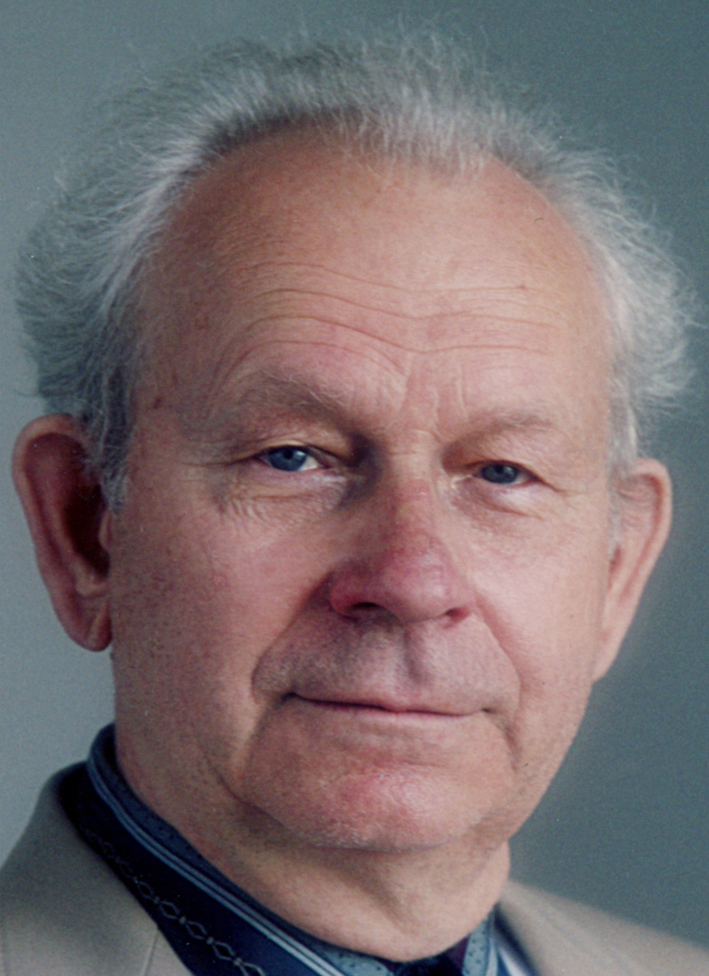Scientific Horizons of Karazin: Biologist Serhiy Sidorovskyi on Water Bodies After the War, Research of Aquatic Fauna, and Motivation for Science in Ukraine
.jpg)
We are proud of our young scientists who work on duty, conduct scientific experiments, and continue their global research despite the war. Among these successful PhD students is Serhiy Sidorovskyi, whose h-index this year was the highest among biology PhD students.
Serhiy began his scientific journey back in 2009, during his second year at the School of Biology, under the supervision of Serhiy and Andriy Utevskyi. He started studying the crustacean fauna of the Kharkiv region. During this time, he discovered species of crustaceans listed in the Red Book that had not been found for decades. Some of his findings are the only ones recorded in half a century.
%20(1).jpg)
Serhiy Sidorovskyi noted that science is not just about experiments; his personal research consistently involves a lot of administrative work and calculations, but it also allows for a flexible schedule, enabling him to allocate time for science popularization and teaching. Serhiy's dream of becoming a biologist has been with him since childhood. His grandfather, Mykhailo Yefimov, who was engaged in cucumber breeding, fostered his desire to study microbiology, botany, and zoology.
Mr. Serhiy, according to Scopus, you have a high h-index. Could you tell us a few words about your scientific work?
In Scopus, I currently have two papers dedicated to alien species—the marble crayfish (which is gradually taking over our water bodies and is found in various regions of Ukraine) and the Japanese freshwater prawn Macrobrachium. Another article is dedicated to the leech Helobdella europaea, a potentially alien species in the Kharkiv region and Ukraine. H. europaea is believed to originate from South America. Recent studies have shown that H. europaea is found in Spain, South Africa, Taiwan, Australia, New Zealand, and the USA. It is believed that these leeches have spread worldwide with aquatic plants and snails.
H. europaea was first recorded in the Kharkiv region in 2015, during the maintenance of a private aquarium in Kharkiv. Through communication with aquarists in Kharkiv from 2021 to 2024, we discovered at least three aquarists who have Helobdella europaea living continuously and reproducing stably. This leech poses no significant threat to aquarium inhabitants, except for mollusks.
Tell us, what are you currently working on, and what have you managed to study? What conclusions have you drawn?
I am currently focusing on studying alien invertebrates in the water bodies of the Kharkiv region and Ukraine as a whole. We have found several interesting aquarium species in the wild, including the pink ramshorn snail (Planorbella duryi) and the cherry shrimp (Neocaridina davidi), also known as Sakura or Red Cherry Shrimp.
 The cherry shrimp originates from eastern China and northern Taiwan and has been introduced to the rest of Taiwan, Japan, and Hawaii.
The cherry shrimp originates from eastern China and northern Taiwan and has been introduced to the rest of Taiwan, Japan, and Hawaii.
The natural coloration of N. davidi is green-brown, although there is a wide variety of color morphs: red, yellow, orange, green, blue, purple, and black. In recent years, this shrimp has been found in thermally polluted waters in Europe, particularly in Germany, Poland, and Hungary. Outside of thermally polluted water bodies, the cherry shrimp has not been found.
In the Kharkiv region, N. davidi was found for the first time in June 2020.
We discovered N. davidi in a thermally polluted section of a river that flows through Kharkiv, with 13 individuals. The population in this area has existed since 2019. We also confirmed the presence of the N. davidi population in June 2021 at the same location. Outside the warm section, water lettuce (Pistia stratiotes L.) is present in the same area. P. stratiotes is likely native to South America, though there are also hypotheses of African origin. This species, as an invasive one, has been found in many countries worldwide. Planorbella duryi originates from South America (Florida) and has been introduced to South Africa, East Africa, Peru, Brazil, Hawaii, and Europe, with reports from specific locations in various countries (Wetherby, 1879; Grano, 2022). In recent years, P. duryi has been found in thermally polluted water bodies in Europe, including in the United Kingdom (Anderson, 2005), Slovakia (Steffek, 2007), Italy (Cianfanelli, et al., 2007), Spain (Salgado, et al., 2014), and Croatia (Štamol, et al., 2015).
Outside thermally polluted water bodies, P. duryi has not been found. In Ukraine, P. duryi was found in the Odesa (Son, 2019), Donetsk (Pisaryev, 2022), and Khmelnytskyi regions (Sylaieva et al., 2009). All these findings were in artificial water bodies with a reduced temperature regime throughout the year. In the Kharkiv region, P. duryi was first found in large numbers in the discharge channel of the Eschar Thermal Power Plant, with no evidence of the mollusk spreading beyond the channel into the Siverskyi Donets River (Sidorovskyi et al., 2023). In 2023, a second location of this species was found within the city of Kharkiv, with two individuals in an artificial water body.
Can you assess the state of the environment and what awaits us regarding water bodies after the war?
After the war, we can expect many changes in water bodies, such as an increase in biological resources due to the absence of human activity and a rise in alien species. Many people, fleeing the war, simply released their aquariums into nearby water bodies.
Who commissions the study of fauna, and where might it be useful?
Research on species diversity is often commissioned by companies whose activities are related to environmental pollution, such as Naftogaz.

What are your future plans? What motivates a young scientist to pursue their goals?
I plan to continue studying and monitoring the dynamics of the population and distribution of alien species. Overall, I feel comfortable working at the university. I like both the team and the working conditions. This is one of the reasons why I want to continue doing science here. Over the past half-century, the species diversity in the Kharkiv region has changed significantly: some species are no longer found, but new ones have appeared that were not previously recorded. These things still require deep research.

What does science mean to you?
It is an opportunity to realize myself in different formats. It's a field where you're never bored. It allows you to set not just simple, ordinary goals but something higher—something that can be achieved.






.jpg)


.jpg)
.jpg)

